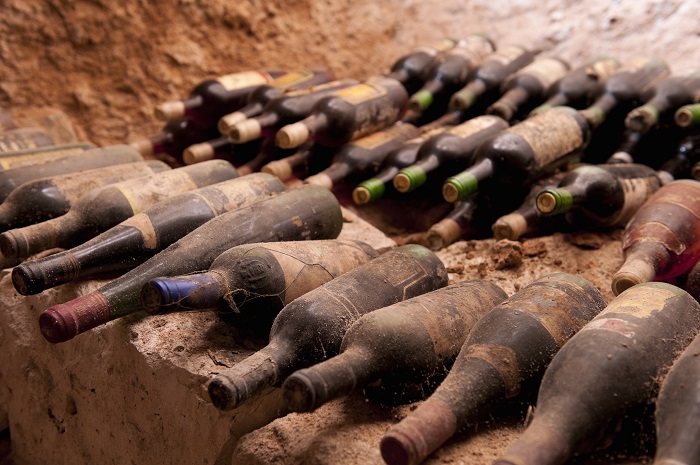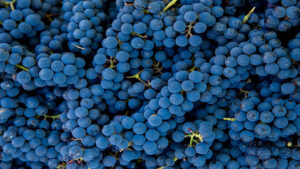
This question often arises in summer and winter. When the outdoor temperature drops below freezing or soars to 35°C, many wine lovers’ cellars hover around 8°C while others flirt with, or even exceed, 20°C. Is this cause for concern?
Wine guide books and reference manuals reiterate the same points time and time again. They all agree that the ideal cellar for storing wine is one free from vibrations, light and smells, with a humidity level higher than 75% and a temperature in the region of 12°C–14°C. Easier to write than to actually experience!
Traditional wine cellars tend to be located in the basement of residential buildings or single-family homes. Apart from a few rare exceptions, these cellars never quite meet the specifications set out above. Does this really matter when it comes to preserving your bottles?
Ironically, despite most people’s fixation on the ‘temperature’ variable, this is probably the least sensitive of them all. A wine subjected to regular vibrations, strong light, persistent oil smells or stored in a room devoid of humidity will most certainly age poorly. On the other hand, barring very rare exceptions, there is absolutely no risk to a wine being stored undisturbed in a cellar where the temperature slowly increases over the months to between 12°C and 20°C (as is the case with the ‘average’ cellar), as long as the changes are gradual.
Golden rules for the ideal temperature of your wine cellar
Only sudden temperature changes can cause damage. Gradual changes relating to seasons pose no risk at all.
– 1. If you store your wine in a cellar where the temperature varies between 12°C and 18°C (or even 20°C), it will evolve slightly faster than a wine that remains in a cellar at 12°C or 13°C. Meanwhile, if the cellar temperature is too cool, you’re not in danger of causing any harm to the wine, but that will slow down the ageing process. But rest assured that it’s actually more of a benefit than a drawback. If, like some enthusiasts, you have placed part of your wine collection in a ‘wine storage facility’ located in old quarries – or, even better, in the iDealwine wine storage cellar – where the temperature remains at 12°C all year round, your wines will have barely evolved after ten or fifteen years. So we recommend that you take them out of storage two or three years before their intended consumption and store them in a cellar where the temperature varies within an acceptable range to ‘unlock’ their ageing.
– 2. If your cellar is constantly above 16°C, your wines will develop fairly quickly, even if the temperature does not exceed 20°C during the hottest period of the year. Relax, they won’t grow that old in the space of three or four years! Then again, if you only intend on opening them after twenty years, you might want to find somewhere else to store them. As for the wines you drink within a few years of their purchase, there’s no problem.
– 3. We advise anyone living in a flat or house with no cellar, or with a cellar that never dips below 18°C, to consider your options to find a solution. Wine cabinets, furniture-style cabinets specifically designed for storing wine bottles, are a good solution for medium-term storage (up to 5/6 years). However, they are less reliable for storage periods exceeding ten years. Alternatively, you should consider storing your bottles of wine for ageing in the cellar of a friend, relative or country house, or in iDealwine’s dedicated storage cellar.
– 4. Last but not least, some wines are more delicate than others and need to be stored more carefully. This is the case with most sulphur-free or low-sulphur wines, which should ideally be stored at 14°C or 15°C maximum. Also, as a general rule, white wines are more sensitive than tannic red wines, which can ‘withstand’ unusual temperatures more easily and without damage! You should try to find the coolest place in your cellar to lay your ageing white wines, or place them at the bottom of a rack or shelf, where they stay coolest.
And finally, when it comes to the right serving temperature, keep the following rules in mind (though there are many exceptions): white wine (12°C), light red wine (14°C), medium-bodied red wine (16°C), full-bodied red wine or old vintage (18°C), sweet wine and Champagne (9°C), rosé wine (10°C). A rule of thumb: it’s better to serve a wine that’s slightly too chilled and warm it in the glass! Learn more about serving temperatures here.
To finish, the ideal solution would be to install an air-conditioning system in your wine cellar and adjust the temperature yourself, between 12°C and 18°C, as the months go by. But this does slightly increase the price of your glass of wine!



